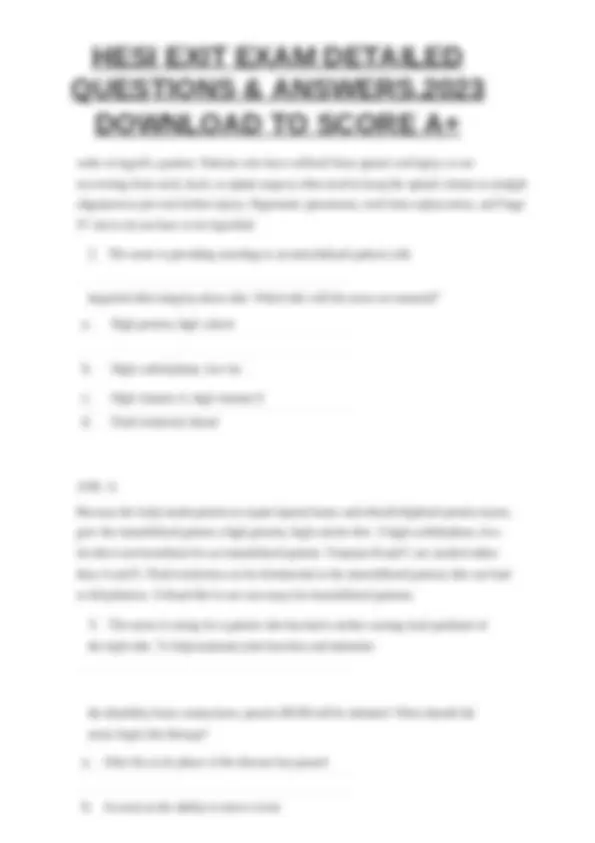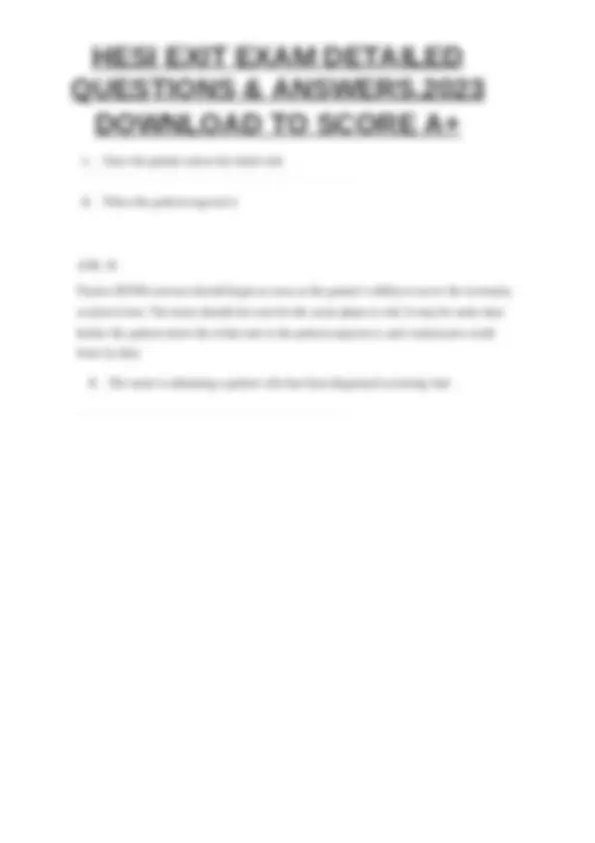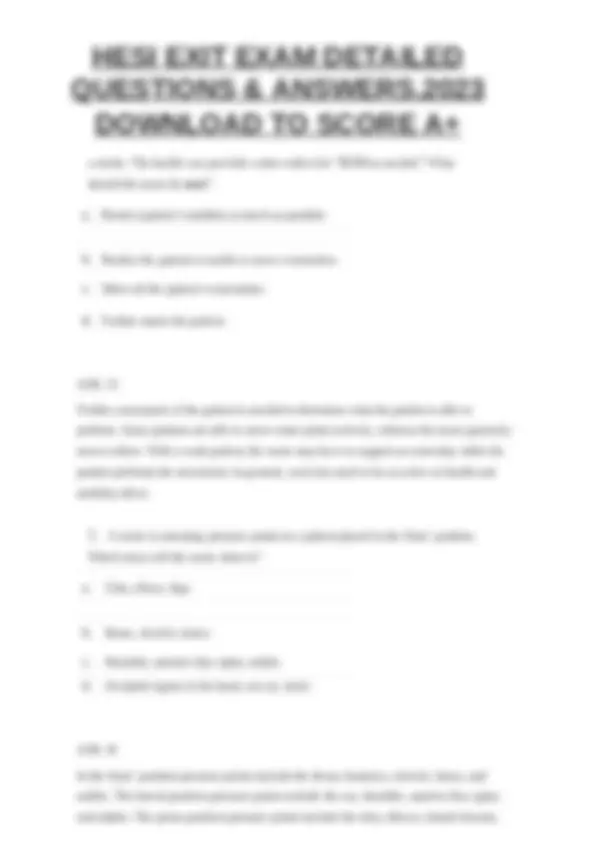





Study with the several resources on Docsity

Earn points by helping other students or get them with a premium plan


Prepare for your exams
Study with the several resources on Docsity

Earn points to download
Earn points by helping other students or get them with a premium plan
Community
Ask the community for help and clear up your study doubts
Discover the best universities in your country according to Docsity users
Free resources
Download our free guides on studying techniques, anxiety management strategies, and thesis advice from Docsity tutors
Detailed questions and answers for the hesi exit exam in the nursing field. It covers various topics such as patient evaluation, logrolling, patient teaching, stroke care, and pressure point assessment. The document helps students prepare for the exam by providing accurate and clear answers to common nursing questions.
Typology: Exams
1 / 7

This page cannot be seen from the preview
Don't miss anything!




QN 1.A nurse is evaluating care of an immobilized patient. Which action will the nurse take?
Compare the patient’s actual outcomes with the outcomes in the care
Involve primarily the patient’s family and health care team to
Use objective data solely in determining whether interventions have
From your perspective as the nurse, you are to evaluate outcomes and response to nursing care and compare the patient’s actual outcomes with the outcomes selected during planning. Ask if the patient’s expectations (subjective data) of care are being met, and use objective data to determine the success of interventions. Just as it was important to include the patient during the assessment and planning phase of the care plan, it is essential to have the patient’s evaluation of the plan of care, not just the patient’s family and health care team.
most likely providing care?
A nurse supervises and aids personnel when there is a health care provider’s
Passive ROM exercises should begin as soon as the patient’s ability to move the extremity or joint is lost. The nurse should not wait for the acute phase to end. It may be some time before the patient enters the rehab unit or the patient requests it, and contractures could form by then.
a stroke. The health care provider writes orders for “ROM as needed.” What should the nurse do next?
Further assessment of the patient is needed to determine what the patient is able to perform. Some patients are able to move some joints actively, whereas the nurse passively moves others. With a weak patient, the nurse may have to support an extremity while the patient performs the movement. In general, exercises need to be as active as health and mobility allow.
Which areas will the nurse observe?
In the Sims’ position pressure points include the ileum, humerus, clavicle, knees, and ankles. The lateral position pressure points include the ear, shoulder, anterior iliac spine, and ankles. The prone position pressure points include the chin, elbows, female breasts,
to the chair. Which nursing intervention is most appropriate for this patient?
Give pain medication after ambulation so the patient will have a clear
Assist with walking and measure how far the patient walks to quantify progress. The nurse should allow the patient to do as much for self as possible. Therefore, the nurse should observe the patient transferring from the bed to the chair using the walker and should provide assistance as needed. The patient should be encouraged to use adequate pain medication to decrease the effects of pain and to increase mobility. The patient should be instructed on safe transfer and ambulation techniques in an environment with few distractions, not in the cafeteria.